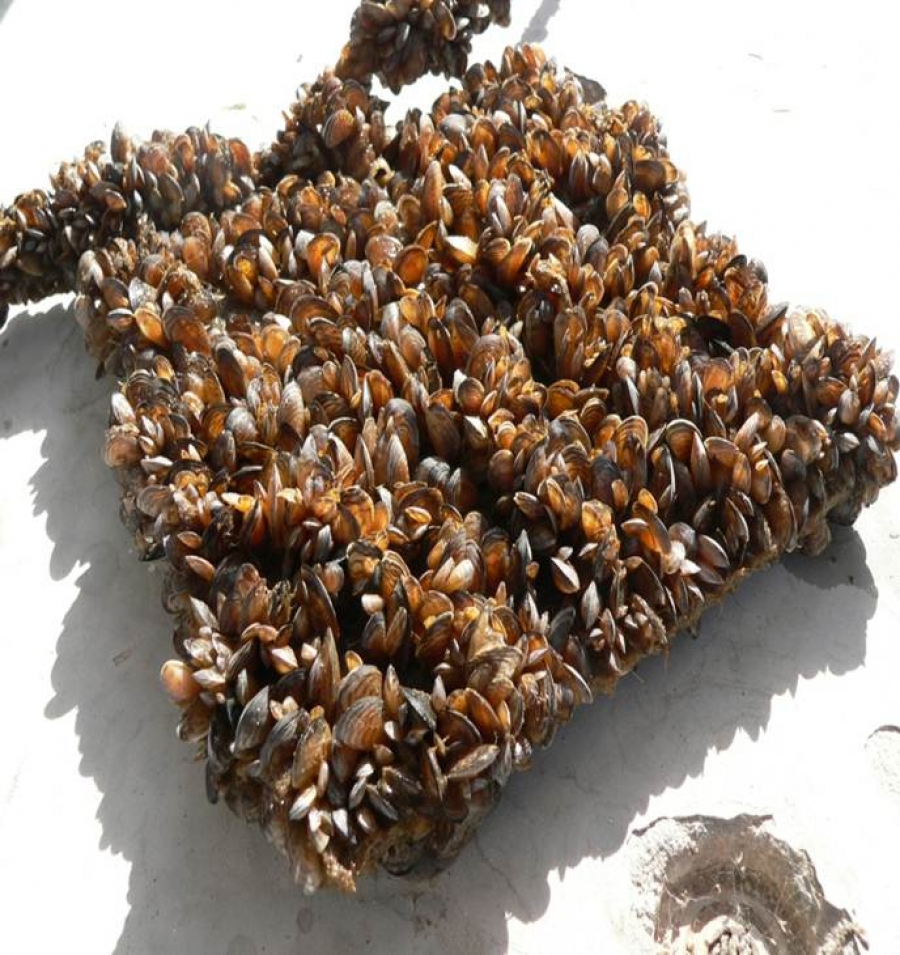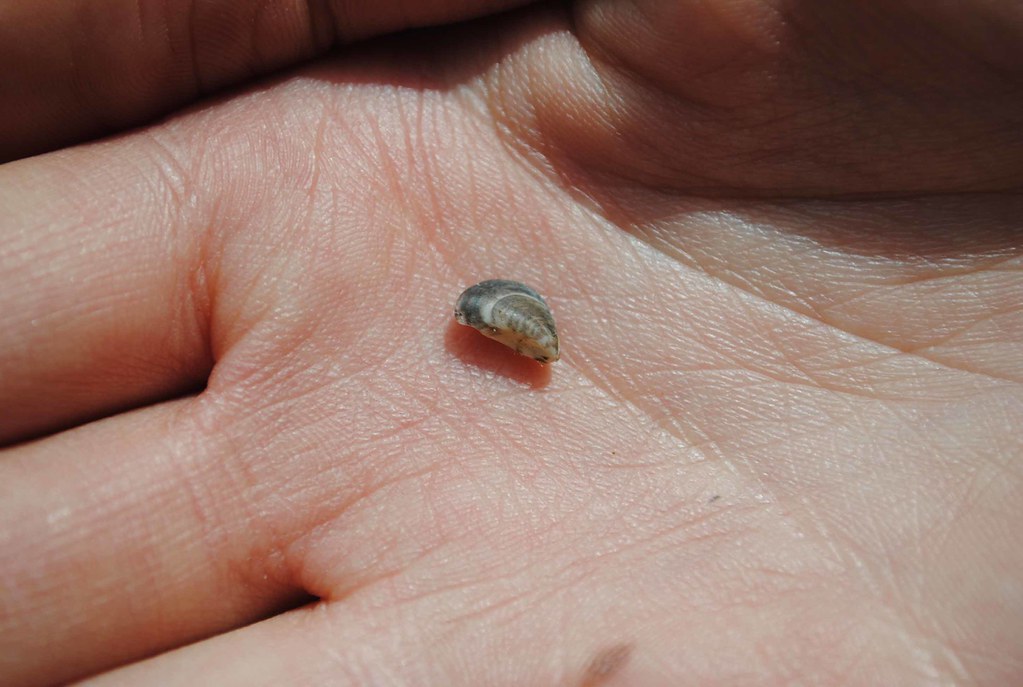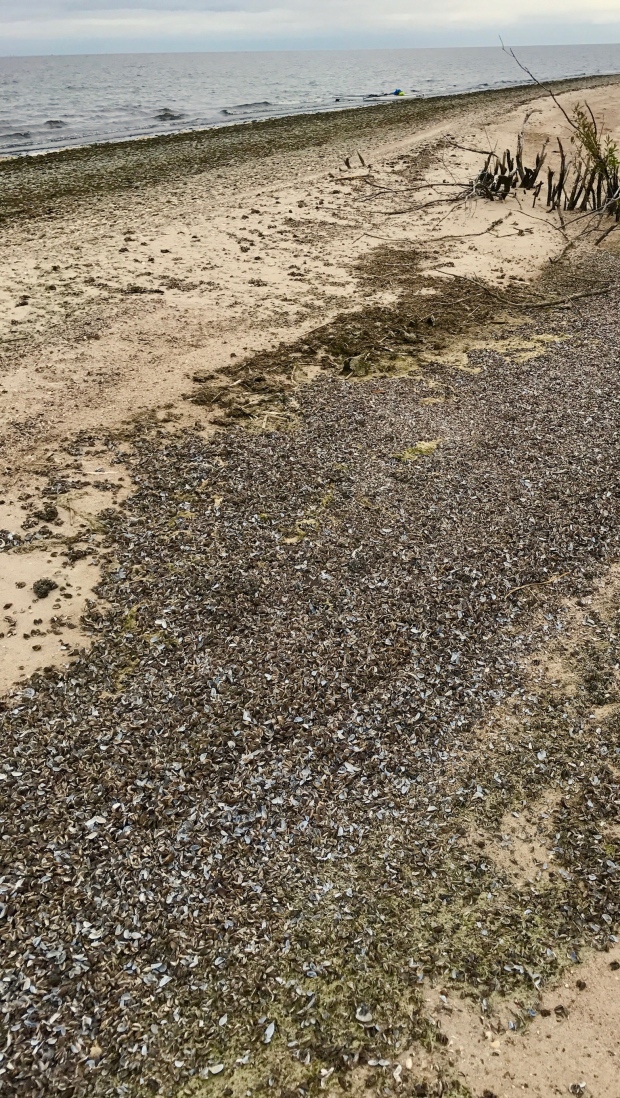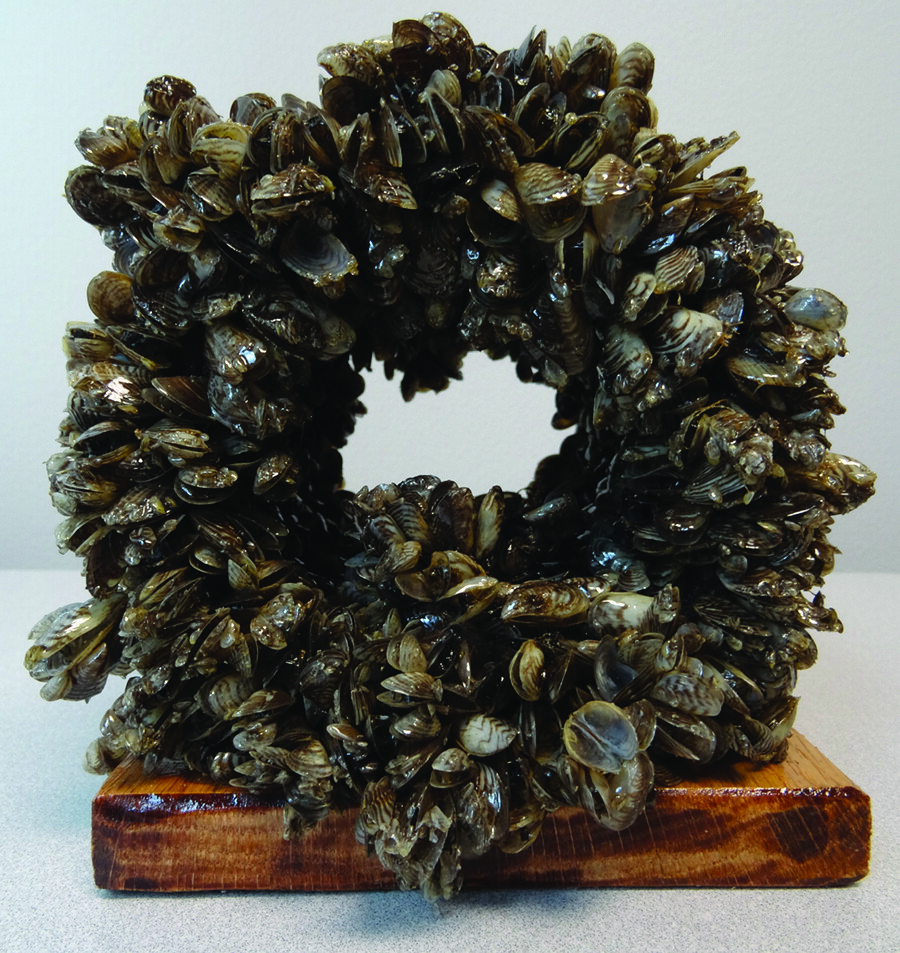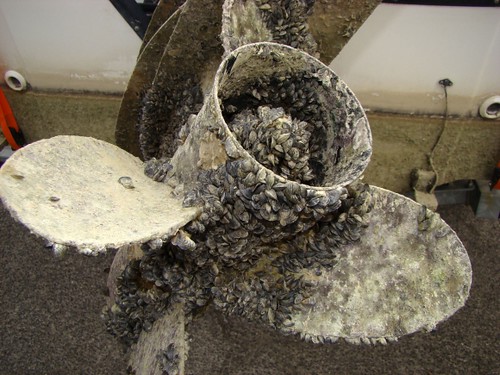Dreissena polymorpha and Dresissena bugenis
Description
- Native to the Caspian Sea.
- Freshwater mollusks that colonize lakes and rivers.
- Preferred habitats include calm waters upstream of dams.
- Small mussels, ranging in size from 1 mm to 3 cm as fully grown adults.
Zebra mussel
- Shells can be brown or cream-coloured with jagged brown or black stripes across the shell usually present. Shell is D-shaped.
- Byssal threads (or ropes) are on the hinge edge of its shell. These threads are unique to Zebra and Quagga Mussels and are not found on native mussels.
Quagga mussel
- Shell may be striped, like that of the Zebra Mussel.
- Byssal threads (or ropes) are on the hinge edge of its shell.
- Shell is more rounded (fan shaped with pointed edges at either side) on the hinge edge than Zebra Mussel shells. Doesn’t sit flat.
- The shells of the Quagga Mussels are thinner and lighter when they live on soft surfaces, and thicker and heavier when they live on hard or rocky surfaces.
Consequences of invasion
- Local extirpation of native mussel populations.
- Filter water to the point where food sources such as plankton are removed.
- Impact fish and wildlife and drinking water by increasing toxic algal blooms.
- Affect recreational activities by cutting swimmers feet as a result of their sharp shells.
- Increase costs associated with maintaining infrastructure related to power generation, sewage and water facilities.
Integrated pest management options
- Prevention is key!
- Clean, Drain, Dry your watercraft when moving between bodies of water.
Additional resources
- Zebra and Quagga Mussels | CKISS PDF Profile
- Zebra and Quagga Mussels | Ontario’s Invading Species Awareness Program
- Zebra and Quagga Mussels | Invasive Species Centre
- Zebra and Quagga Mussels | Clean Drain Dry
- Zebra and Quagga Mussels | Sea to Sky Invasive Species Council
- Zebra and Quagga Mussels: BC Early Detection Rapid Response Plan | IMISWG
Mussel Threat – Protecting BC’s Freshwater

